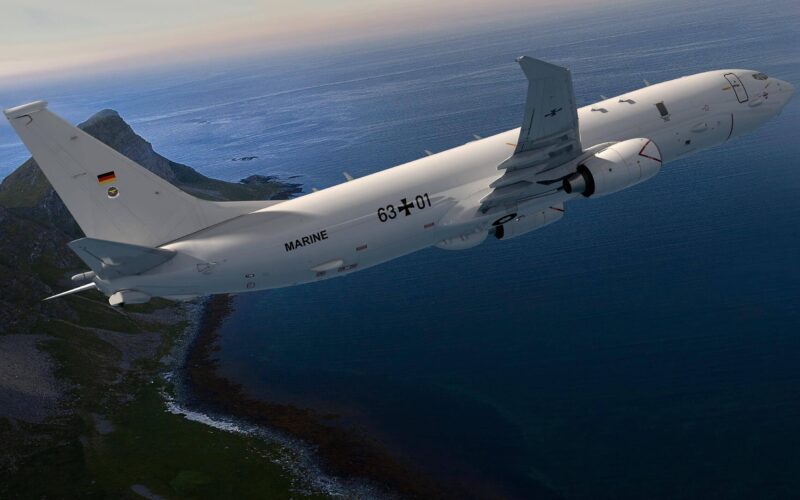Boeing was awarded the production contract for the assembly of the five P-8A Poseidon intended for the German navy, the manufacturer reported on September 28, 2021.
The Poseidons will replace the Deutsche Marine fleet of eight Lockheed P-3C Orion aircraft, whose maintenance cost was considered too high. Initially destined to operate until 2035, their retirement was moved forward to 2025.
To avoid a gap in capability, Germany had to acquire a stopgap replacement. The P-8 Poseidon was chosen in March 2021.
“We’re pleased to have finalized this sale to Germany and to expand our footprint in-country by bringing the P-8A and its unique multi-mission capabilities to the German Navy,” said Michael Hostetter, vice president of Boeing Defense, Space & Security, Germany. “The P-8 will ensure the German Navy’s ability to perform long-range maritime surveillance missions and will play a pivotal role in the region by leveraging existing infrastructure in Europe and full interoperability with NATO’s most advanced assets.”
The P-8 Poseidon is a multi-role maritime patrol aircraft, equipped with a naval search radar for search and tracking capability. Based on the fuselage of the Boeing 737-800, with the wings of the -900, it is powered by two CFM56-7B engines from CFM International, giving it a range of 5,900 kilometers (3,666 miles). It can also be fitted, both internally and externally, with an array of armaments dedicated to submarine and anti-ship warfare, such as torpedoes, mines, depth charges, and anti-ship missiles.
Boeing has delivered 136 P-8 aircraft to date. It is already operated by the US Navy, the Royal Australian Air Force, the Indian Navy, and the British Royal Air Force. Along with Germany, the maritime patrol aircraft was also selected by South Korea, New Zealand, and Norway.
The death sentence of the MAWS program?
The acquisition, however, could jeopardize the continuation of the Maritime Airborne Warfare System (MAWS) program that Germany and France initiated in 2018.
With both the French and German Navy having to retire their Maritime Patrol Aircraft (the PC-3 on the German side, the Atlantique 2 on the French side) around 2035, the two countries have decided to conjointly develop a new aircraft due to enter service by the time its two predecessors would retire.
The acquisition of five P-8 Poseidon aircraft was presented as an “interim solution” by Germany. However, when it cleared the acquisition, the US Defense Security and Cooperation Agency said that the proposed sale would “allow Germany to modernize and sustain its Maritime Surveillance Aircraft (MSA) capability for the next 30 years” – way beyond the entry into service of the hypothetical MWAS aircraft.
In June 2021, Joël Barre, general delegate for armaments, told the French Parliament that the government was “reconsidering their position regarding the continuation” of the program. Dassault Aviation, already describing the MAWS as a “failure”, said it was ready to offer a solution based on the Falcon 10X platform.

